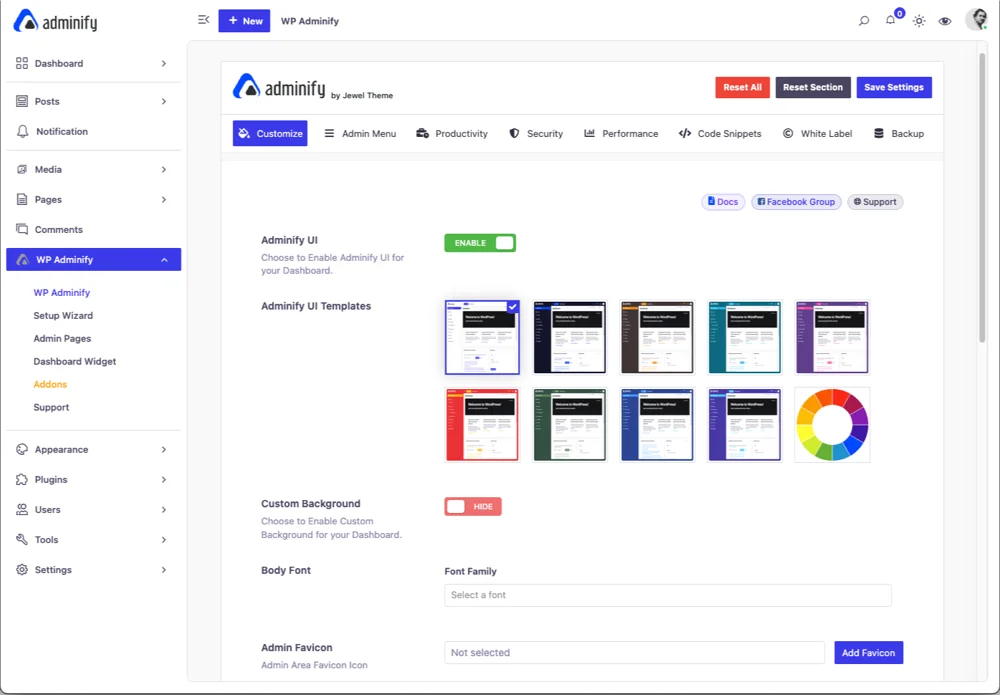It’s a beautiful sunny day, you’re up early sitting on your porch admiring the weather and you pull out your laptop excited by the endless possibilities of a productive day to follow.
You open your browser, go over to the search bar, and type in your website URL. Just as you’re taking a sip of your coffee your eyes wander to the screen and you see this

Vibes ruined, day ruined, mood ruined! But it can get way worse! What if you don’t know what the http status code error even means?
We’ve all been there. Trying to get work done only to be stopped in our tracks by an http error code. It's truly a nightmare, especially for a non-technical person who lacks the know-how to decipher the code.
That is exactly why we’ve decided to write this guide for you. We’ll take you through the dark seedy underbelly of the world of http error codes and walk you through what each means and what to do when you run into one.
But first, we need to understand what an http error code is.
What is an HTTP Status Code Error?
HTTP status codes are messages from web servers to your browser. They help explain what happened when you try to visit a webpage. These codes are important because they tell you if something went wrong and what it might be.
Here’s how it works:
- You Request a Page: When you type a website address into your browser or click a link, your browser asks the server for the page.
- Server Processes the Request: The server gets your request and looks for the page or file you want.
- Server Sends a Response: The server then sends back a message with a status code to tell your browser what happened.

These status codes are grouped into five types:
- 1xx Informational: The server got the request and is still working on it.
- 2xx Success: The request was successful, and the server has sent the page or file you wanted.
- 3xx Redirection: You need to do something else, like go to a different page.
- 4xx Client Error: There was a problem with your request, like a wrong address or not having permission.
- 5xx Server Error: The server had a problem and couldn’t do what you asked.
These codes help you understand why a page isn’t loading and what might be wrong. By knowing what these codes mean, you can fix problems on your website and keep everything running smoothly.
However, If you can’t already tell, error codes and their related terms and descriptions where written by developers and engineers for developers and engineers. Which means that some of the terminology might come off as gibberish to the average layman who’s just trying to manage an eCommerce site or a blog. So before going into the codes here’s a list of terms that you might run into and what they mean.
Terminology List
HTTP (HyperText Transfer Protocol): The foundation of any data exchange on the Web. It is a protocol used for transmitting hypertext requests and information between servers and browsers.
Status Code: A three-digit number sent by a server in response to a client's request. It indicates the status of the request.
URI (Uniform Resource Identifier): A string of characters used to identify a resource on the Internet. This includes URLs (Uniform Resource Locators), which are the web addresses you type into your browser.
Server: A computer or system that provides resources, data, services, or programs to other computers, known as clients, over a network.
Client: The device or software (like your web browser) that requests resources or services from a server.
Browser: A software application used to access and view websites. Examples include Google Chrome, Mozilla Firefox, Safari, and Microsoft Edge.
Redirect: A method used to send users and search engines to a different URL from the one they originally requested.
Cache: A storage location that temporarily stores data so future requests for that data can be served faster.
Permissions: The rights or access levels assigned to users or processes to read, write, or execute files or resources on a server.
Logs: Files that record events and activities on a server. Logs can help diagnose and troubleshoot issues by providing detailed information about what happened at specific times.
Plugin: A piece of software that adds specific features or functionalities to a WordPress site.
Theme: A collection of templates and stylesheets used to define the appearance and display of a WordPress site.
Host/Hosting Provider: A service that provides the technologies needed for a website to be viewed on the Internet. Hosting providers store your website files on their servers and make them accessible to users.
Customize Your WordPress Admin Experience
Streamline your WordPress admin bar for faster troubleshooting with Admin Bar Editor. Position your most-used tools where you need them and hide irrelevant items for a cleaner interface.

Common WordPress HTTP Status Code Errors
Informational Responses (1xx)
1xx status codes are messages from the server that tell you the request has been received and is being processed. These are not final responses, but rather updates that the server is working on your request.
1xx codes are generally not common in everyday browsing. They are more like behind-the-scenes updates to let the browser know the server is handling things.
Successful Responses (2xx)
2xx status codes indicate that the server successfully processed the request and completed it as expected. These codes generally mean that everything went well with your request.
2xx status codes are positive indicators that your request was successful and that the server responded as expected.
Redirection Messages (3xx)
3xx status codes indicate that further action needs to be taken by the client (your browser) to complete the request. These codes are used when the resource you requested has been moved to a different location or requires some sort of redirection.
3xx status codes are helpful for managing and maintaining web traffic, ensuring users are directed to the correct resources even if their locations change.
Client Error Responses (4xx)
4xx status codes indicate that there was an error with the request from your browser or client. These errors mean that something went wrong on the client side, like typing a wrong URL or not having permission to access a page.
4xx status codes help identify and troubleshoot issues that originate from the client’s side, making it easier to resolve access and request problems.
Server Error Responses (5xx)
5xx status codes indicate that the server encountered a problem while processing the request. These errors mean something went wrong on the server side, and it couldn’t complete the request.
5xx status codes help diagnose and address server-side issues, ensuring the server can successfully handle future requests.
Some Common WordPress Error Codes
WordPress users often encounter various HTTP status error codes while managing their sites. Understanding these codes can help you troubleshoot issues more effectively. Here are some of the most common error codes WordPress administrators face:
403 Forbidden Error
The WP Admin 403 forbidden error is a frequent issue that prevents access to the WordPress admin area. This "wordpress admin 403 forbidden" message typically appears when there's a problem with file permissions or security plugins. To resolve the 403 error wordpress admin issue, check your .htaccess file, disable security plugins temporarily, or contact your hosting provider for assistance.

404 Not Found Error
Encountering an error 404 wordpress admin can be frustrating, especially when trying to access the admin panel. This wordpress admin 404 issue often occurs due to incorrect permalink settings or corrupted .htaccess files. If you're facing a wp admin 404 error, try resetting your permalinks or regenerating your .htaccess file.

400 Bad Request Error
The wp admin ajax 400 bad request is a common error that occurs during AJAX operations in WordPress. This can be caused by conflicts with plugins, themes, or incorrect server configurations. To resolve this, try disabling plugins one by one, switching to a default theme, or increasing your server's PHP memory limit.

415 Unsupported Media Type
The status code 415 error is less common but can occur when uploading media files to WordPress. This usually happens when the server doesn't recognize the file type you're trying to upload. Ensure that your file types are supported and that your server's MIME types are correctly configured.

500 Internal Server Error
A wordpress admin 500 error is a generic error message indicating that something has gone wrong on the server side. This can be caused by various issues, including plugin conflicts, corrupted WordPress core files, or PHP memory limits. To troubleshoot, try increasing PHP memory, disabling all plugins, or reinstalling WordPress core files.

503 Service Unavailable
The wp admin 503 service unavailable error typically occurs when your server is overloaded or undergoing maintenance. This can be due to high traffic, resource-intensive plugins, or actual server maintenance. If you encounter this error, wait a few minutes and try again. If the issue persists, contact your hosting provider for assistance.

Prevent Server Errors With Better Performance
WP Adminify's performance optimization tools help reduce server load and prevent common 500 errors by managing scripts, styles, and bloated WordPress features.

Final Thoughts
Understanding HTTP status codes is essential for diagnosing and resolving issues on your WordPress site.
These codes provide valuable information about what went wrong and how to fix it, whether it’s a client-side error or a server-side problem. By familiarizing yourself with these codes, you can quickly identify and address issues, ensuring a smooth and reliable experience for your website visitors.
Keep this guide handy as a reference to troubleshoot any HTTP errors you encounter, and maintain a well-functioning WordPress site.



